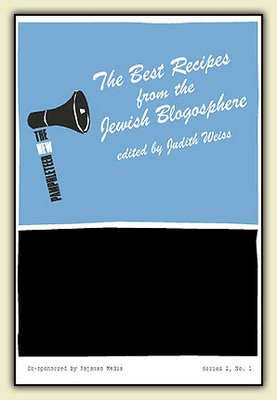This year’s Aubrey-Maturin Dinner was a huge success: The guests were compatible; the conversation and wine flowed endlessly (oh, and what wines we had!); and the food was stupendous.
Both the Missus and I agreed that the Roast Beef of Olde England that Houston Steve prepared was possibly the best roast beef we have ever had, a four-rib standing roast encrusted with sea salt and porcini mushrooms, cooked to a perfect degree of doneness.
The goose, along with its accompanying giblet gravy, was excellent as well, with medium-rare breast meat and crispy skin. I would eat one of those every week if I could afford it, or if my waistline and coronary arteries could stand it. Duck would be a much more affordable substitute (albeit almost as cholesterolific): an average-size duck will run you $14 or so, whereas a goose will set you back between $40 and $45.
This year, I spatchcocked the goose before roasting it. [I love that word. Spatchcock. Spatchcock. Say it a bunch of times and it just gets funnier. Spatchcock.] You lay the bird down on a cutting board and, using a pair of heavy poultry shears, cut along either side of the backbone to remove it. You then flatten it out, opening it up like a book. Save that backbone - you’ll need it for the sauce.
I salted the bird down with kosher salt. Alton Brown’s recipe for roast duck recommends using one tablespoon of salt per pound, but I cut down on that somewhat, since a goose is about twice as big as a duck... and I wasn’t going to let the bird sit for 3-4 days before cooking it. So: about two tablespoons of salt on the underside (inside) of the goose, and the same amount (mixed with a teaspoon of baking powder) on the skin side. The alkaline baking powder helps make the skin extra crispy. [If you try using table salt instead of kosher salt, just toss the whole bird in the trash: it will be far too salty to eat.] Using a small, sharp knife, make small slits in the skin every half-inch without cutting into the flesh. Set the bird on a rack over a paper towel-lined pan and put it in the fridge for 1-3 days.
A day before roasting the goose, I made a stock from the giblets (reserve the liver) and the backbone. (You did save the backbone, didn’t you?) Toss ’em in a saucepan with a couple of carrots, a yellow onion, and a celery stalk (cut into large chunks); a few parsley stems; ten whole peppercorns; a sprig of fresh thyme; and 2-3 peeled cloves of garlic; then cover with water and bring to a gentle simmer. After 4-5 hours, strain the stock and chill in the fridge overnight. Toss out the vegetables and reserve the meaty bits - when they’re cool enough to handle, chop up the heart and gizzard, pull the flesh of the neck off the bones, and mince that up. Sauté the (previously reserved) liver in a dab of butter, then mince that up too and add it to the other giblets. Put the giblets aside to chill in the fridge untill you need ’em.
When you’re ready to roast the bird, preheat the oven to 300° and place skin-side down on a rack in a roasting pan. Roast for one hour, then drain the grease from the pan and turn the bird over so that the skin side is up. Continue to roast until the breast meat reaches an internal temperature of 180°F, then crank the oven temp up to 450°F and roast for another 15 minutes or so, just enough to crisp the skin. You’ll want to drain the grease from the pan every hour. Save that goose schmaltz - it’ll come in handy next time you want to fry some ’taters!
With our eight-and-a-half pound bird, the whole roasting process took about three hours and thirty minutes. But use that thermometer - you don’t want to overdo it.
While the bird is roasting, make the giblet gravy. Take the chilled stock - you should have about a quart - scrape off the congealed grease from the top and discard, and set aside about a cup of the cold stock. Put the rest of the stock on a medium flame and simmer until the volume is reduced by about a third. Stir two tablespoons of all-purpose flour into the reserved (cold) stock and mix well, so that there are no lumps. Whisk this flour-stock slurry into the simmering stock.
Continue to simmer the thickened stock for about 30 more minutes, then add the reserved minced giblet mixture. Stir in about two tablespoons of Cognac and a splash of Cointreau.
When the goose is done, pour off any remaining fat from the roasting pan and then deglaze it with about a cup of dry white wine. Be sure to scrape up all the tasty fond from the pan. Add this stuff to the simmering gravy.
When it’s time to serve the bird, add a small handful of fresh, torn basil leaves to the gravy; correct the seasoning. Just before serving, stir in a knob of butter. Serve hot alongside the goose.
At the Aubrey-Maturin Dinner, we had Houston Steve’s legendary Yorkshire puddings with the beef and goose. There is no finer Gravy Conveyance Device than a Yorkshire pudding baked in a muffin tin; it’s just the right size and even has a convenient well to hold the gravy. I wonder whether one could make those Yorkies with goose schmaltz in lieu of the usual hot-from-the-oven beef drippings... Ha! An experiment suggests itself!
Both the Missus and I agreed that the Roast Beef of Olde England that Houston Steve prepared was possibly the best roast beef we have ever had, a four-rib standing roast encrusted with sea salt and porcini mushrooms, cooked to a perfect degree of doneness.
The goose, along with its accompanying giblet gravy, was excellent as well, with medium-rare breast meat and crispy skin. I would eat one of those every week if I could afford it, or if my waistline and coronary arteries could stand it. Duck would be a much more affordable substitute (albeit almost as cholesterolific): an average-size duck will run you $14 or so, whereas a goose will set you back between $40 and $45.
This year, I spatchcocked the goose before roasting it. [I love that word. Spatchcock. Spatchcock. Say it a bunch of times and it just gets funnier. Spatchcock.] You lay the bird down on a cutting board and, using a pair of heavy poultry shears, cut along either side of the backbone to remove it. You then flatten it out, opening it up like a book. Save that backbone - you’ll need it for the sauce.
I salted the bird down with kosher salt. Alton Brown’s recipe for roast duck recommends using one tablespoon of salt per pound, but I cut down on that somewhat, since a goose is about twice as big as a duck... and I wasn’t going to let the bird sit for 3-4 days before cooking it. So: about two tablespoons of salt on the underside (inside) of the goose, and the same amount (mixed with a teaspoon of baking powder) on the skin side. The alkaline baking powder helps make the skin extra crispy. [If you try using table salt instead of kosher salt, just toss the whole bird in the trash: it will be far too salty to eat.] Using a small, sharp knife, make small slits in the skin every half-inch without cutting into the flesh. Set the bird on a rack over a paper towel-lined pan and put it in the fridge for 1-3 days.
A day before roasting the goose, I made a stock from the giblets (reserve the liver) and the backbone. (You did save the backbone, didn’t you?) Toss ’em in a saucepan with a couple of carrots, a yellow onion, and a celery stalk (cut into large chunks); a few parsley stems; ten whole peppercorns; a sprig of fresh thyme; and 2-3 peeled cloves of garlic; then cover with water and bring to a gentle simmer. After 4-5 hours, strain the stock and chill in the fridge overnight. Toss out the vegetables and reserve the meaty bits - when they’re cool enough to handle, chop up the heart and gizzard, pull the flesh of the neck off the bones, and mince that up. Sauté the (previously reserved) liver in a dab of butter, then mince that up too and add it to the other giblets. Put the giblets aside to chill in the fridge untill you need ’em.
When you’re ready to roast the bird, preheat the oven to 300° and place skin-side down on a rack in a roasting pan. Roast for one hour, then drain the grease from the pan and turn the bird over so that the skin side is up. Continue to roast until the breast meat reaches an internal temperature of 180°F, then crank the oven temp up to 450°F and roast for another 15 minutes or so, just enough to crisp the skin. You’ll want to drain the grease from the pan every hour. Save that goose schmaltz - it’ll come in handy next time you want to fry some ’taters!
With our eight-and-a-half pound bird, the whole roasting process took about three hours and thirty minutes. But use that thermometer - you don’t want to overdo it.
While the bird is roasting, make the giblet gravy. Take the chilled stock - you should have about a quart - scrape off the congealed grease from the top and discard, and set aside about a cup of the cold stock. Put the rest of the stock on a medium flame and simmer until the volume is reduced by about a third. Stir two tablespoons of all-purpose flour into the reserved (cold) stock and mix well, so that there are no lumps. Whisk this flour-stock slurry into the simmering stock.
Continue to simmer the thickened stock for about 30 more minutes, then add the reserved minced giblet mixture. Stir in about two tablespoons of Cognac and a splash of Cointreau.
When the goose is done, pour off any remaining fat from the roasting pan and then deglaze it with about a cup of dry white wine. Be sure to scrape up all the tasty fond from the pan. Add this stuff to the simmering gravy.
When it’s time to serve the bird, add a small handful of fresh, torn basil leaves to the gravy; correct the seasoning. Just before serving, stir in a knob of butter. Serve hot alongside the goose.
At the Aubrey-Maturin Dinner, we had Houston Steve’s legendary Yorkshire puddings with the beef and goose. There is no finer Gravy Conveyance Device than a Yorkshire pudding baked in a muffin tin; it’s just the right size and even has a convenient well to hold the gravy. I wonder whether one could make those Yorkies with goose schmaltz in lieu of the usual hot-from-the-oven beef drippings... Ha! An experiment suggests itself!




















No comments:
Post a Comment